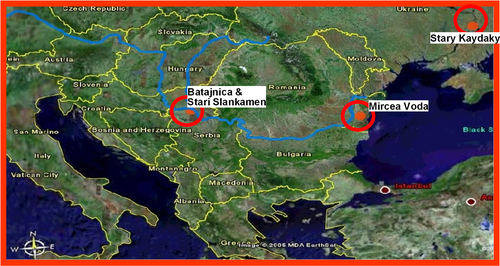Climate and Landscape reconstruction in SE Europe (Pannonian Basin and Black Sea Region): A multiproxy study of loess paleosol sequences.
DFG GL 327/8-2,3
From 08/2005 to 02/2009Principal Investigator: Bruno Glaser, Ludwig Zöller
Staff: Björn Buggle
Climate and Landscape reconstruction in SE Europe (Pannonian Basin and Black Sea Region): A multiproxy study of loess paleosol sequences.
In the Pannonian Basin and the western and northern Black Sea region, loess paleosol sequences of several decametres thickness are widely distributed. They constitute valuable long-term archives for the Quaternary climate and landscape history.

The present knowledge suggests that substantial changes in climate and vegetation (forest, forest-steppe, steppe) occurred in this region during the Quaternary. However, the scientific basis for is up to now very sparse. Therefore, we study three potential key sections of the region: Batajnica/Stari Slankamen (Serbia), Mircea Voda (Romania) and Stary Kaydaky (Ukraine). Each section contains loess-paleosol sequences corresponding to at least six glacial-interglacial cycles. The reconstruction of the paleoenvironmental conditions is based on several pillars:
1) Establishing a reliable chronostratigraphy
Methods: Luminescence dating, pedostratigraphy, paleo- and rock magnetism and correlation to reference climate records of the Quaternary
2) Reconstruction of the loess provenance and paleowind direction to gain a more detailed understanding of the archive and mechanisms and dynamics of it’s formation
Methods: Geochemistry (XRF), analysis of geomorphological and sedimentological maps
3) Reconstruction of soil forming and environmental conditions by identification and semiquantitative analysis of soil forming processes
Methods: Field description, micromorphology, clay-mineral analysis (XRD), rock magnetism, element analysis (XRF), grain size analysis
4) Reconstruction of the paleovegetation
Methods: Biomarker analysis, Pollen analysis, stable isotopes
5) Reconstruction of paleoclimatic conditions
Methods: Synopsis of the multiproxy dataset


